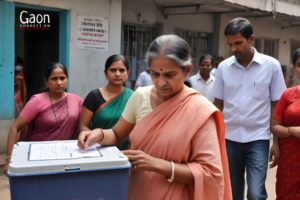Apart from the devastating impact that the COVID-19 pandemic has had on human lives and the global economy for the last two years, the response to its management has led to an increased generation of medical waste. The World Health Organization (WHO) recently suggested measures to reduce the burden on the waste management systems around the world.
The report titled Global analysis of health care waste in the context of COVID-19 bases its estimates on the approximately 87,000 tonnes of personal protective equipment (PPE) such as gloves and medical masks that was procured in 20 months between March 2020 and November 2021 and shipped to support needy countries’ urgent demand of COVID-19 medical products. The report informed that most of this equipment is expected to have ended up as waste.
The WHO report pointed out that over 140 million test kits, with a potential to generate 2,600 tonnes of non-infectious waste (mainly plastic) and 731,000 litres of chemical waste have been shipped, while over eight billion doses of vaccine have been administered globally producing 144,000 tonnes of additional waste in the form of syringes, needles, and safety boxes.
Personal protective equipment is important in preventing health workers from getting and passing on #COVID19.
— World Health Organization (WHO) (@WHO) February 1, 2022
But the unnecessary use of such equipment – like hair and foot coverings – has led to avoidable waste https://t.co/JsYeqvl7G6 pic.twitter.com/zT2mHDrJhj
The WHO report highlighted that India generated about 101 tonnes of COVID-19-related healthcare waste per day during the first wave of the pandemic, in addition to the 609 tonnes of waste generated daily from routine health services (a total of 710 tonnes). The generated medical waste increased by 17 per cent in that time. The total available capacity for incineration of COVID-19 waste in the country is 840 tonnes.
Waste management has proved particularly challenging in remote, rural areas where there are limited waste treatment and disposal facilities. In these areas, exceptions were made to allow waste disposal in landfills and deep burial, noted the WHO report.
This increasing medical waste is threatening human and environmental health and posing a dire need to improve waste management practices, suggested the public health body.
“It is absolutely vital to provide health workers with the right PPE. But it is also vital to ensure that it can be used safely without impacting on the surrounding environment,” Michael Ryan, executive director, WHO Health Emergencies Programme, was quoted in its press statement dated February 1.
Increased risks
The public health body in its report also highlighted that 30 per cent of healthcare facilities (60 per cent in the least developed countries) are not equipped to handle existing waste loads, let alone the additional COVID-19 load.
This potentially exposes health workers to needle stick injuries, burns and pathogenic microorganisms, while also impacting communities living near poorly managed landfills and waste disposal sites through contaminated air from burning waste, poor water quality or disease carrying pests, the WHO warned .
Also Read: Open dumping and burning of mixed biomedical waste raises a stink in Sitapur
“COVID-19 has forced the world to reckon with the gaps and neglected aspects of the waste stream and how we produce, use and discard our health care resources, from cradle to grave,” Maria Neira, Director, Environment, Climate Change and Health at WHO, was quoted in the report.
Suggestions by WHO
At the recent UN Climate Change Conference, Neira stated that significant change at all levels, from the global to the hospital floor, in how we manage the healthcare waste stream is a basic requirement of climate-smart health care systems. She also pointed out that many countries had committed to using such systems.
We need to attend to the extra waste generated by the #COVID19 response
— World Health Organization (WHO) (@WHO) February 1, 2022
To be resilient, green and minimise waste, health systems & facilities 🏥 must follow the waste management hierarchy :
✅ prevention
🔄 re-use
♻️ recycling
🔂 recovery
🔻 disposalhttps://t.co/JsYeqvl7G6 pic.twitter.com/HSZKzqkqVZ
In order to improve waste practices into the current COVID19 response, WHO has recommended using eco-friendly packaging and shipping, safe and reusable PPE, recyclable or biodegradable materials.
The WHO also called for investment in non-burn waste treatment technologies such as autoclaves. An autoclave is a machine that uses pressurised steam to kill harmful bacteria, viruses, fungi, and spores on surfaces.
It also suggested reverse logistics to support centralised treatment and investments in the recycling sector to ensure materials, such as plastics, can have a second life.
Also Read: The Pandemic and Pollution: Handling the packaging waste of increased online shopping
Global
- Strengthen coordination among global health donors, logistics, infection prevention and control, healthcare waste and environment actors.
- Promote and invest in more environmentally sustainable PPE and waste systems
- Support behaviour changes away from single use and overuse of PPE, to appropriate use and reusables, when feasible.
National
- Update, implement and regulate sustainable healthcare waste standards and practices.
- Invest in safe healthcare waste management and hand hygiene, as part of broader infection prevention and control, and WASH efforts.
- Develop, implement and finance a multimodal improvement strategy for hand hygiene to reduce unnecessary glove use.
- Include waste management in health budgets and invest in the recycling market.
- Regularly monitor and report on healthcare waste practices.
- Encourage the most sustainable, safe options for PPE within and outside health care.
Facility
- Improve training, mentoring and investments for safe and sustainable waste management and waste workers.
- Support hand hygiene and appropriate PPE use.
- Incrementally improve environmental sustainability of waste treatment technologies.

















